40 Year Anniversary Video Unveiled
In celebration of 40 years, the Beaches Area Historical Society produced a video chronicling their accomplishments. Please enjoy!
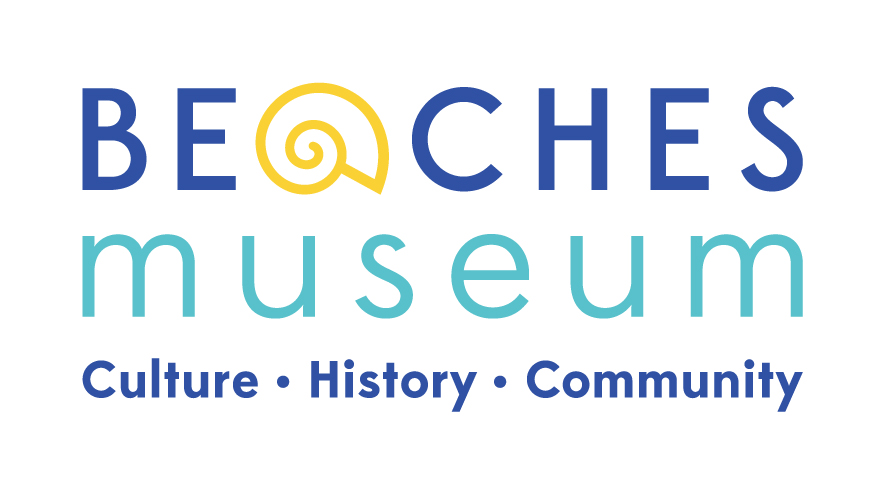
In celebration of 40 years, the Beaches Area Historical Society produced a video chronicling their accomplishments. Please enjoy!
This article was written by Fall 2018 Beaches Museum intern, Alex Morales.
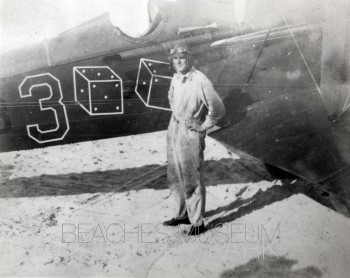 After planes were used during the Great War for air-to-air combat, surveillance, and mail carriers, many U.S. pilots began using their skills to push the limits of aviation technology. Some modified their aircrafts to perform in stunt shows. Others, like Charles Lindberg seized the opportunity to create distance and time records. However, he was neither the only pilot nor the first to make a mark in the aeronautical history books. Jacksonville Beach played host to one famous record breaking pilot, Lt. James H. Doolittle, who set a new transcontinental flight record in 1922.
After planes were used during the Great War for air-to-air combat, surveillance, and mail carriers, many U.S. pilots began using their skills to push the limits of aviation technology. Some modified their aircrafts to perform in stunt shows. Others, like Charles Lindberg seized the opportunity to create distance and time records. However, he was neither the only pilot nor the first to make a mark in the aeronautical history books. Jacksonville Beach played host to one famous record breaking pilot, Lt. James H. Doolittle, who set a new transcontinental flight record in 1922.
Before breaking flight records, Doolittle was a flying instructor with the Army Air Service in Eagle Pass, Texas where he performed border patrol duties. After years of planning, Doolittle prepared his military issued DeHaviland plane to withstand the long distance flight across the U.S. He stripped it of excess weight so it could support a 285 gallon fuel tank and still remain light. On August 6, 1922, at Pablo Beach (present-day Jacksonville Beach), a large crowd of well-wishers and spectators gathered to see him take off. As his plane taxied across the beach, it got caught in soft sand making it veer into the ocean.
Although embarrassed by the faux pas, Doolittle made the necessary repairs to his plane to try again. On September 4, 1922 at 10 pm, with just kerosene lanterns to illuminate the beach, Doolittle soared into the skies and into history. Twenty-one hours and nineteen minutes later, he touched down in San Diego and broke the transcontinental flight record. Making only one stop in San Antonio, he averaged a speed of 105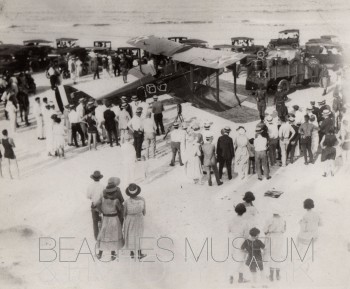 miles per hour and stayed at an altitude of 3,500 feet.
miles per hour and stayed at an altitude of 3,500 feet.
Pablo Beach figured greatly in aviation history due to its location. The distance between San Diego and Pablo Beach is the shortest transcontinental route—a distance of 2,270 miles. The southern route contained fewer mountain ranges and provided relatively better weather conditions for flying. With more military bases along the route, it also ensured that pilots had more opportunities to land safely, refuel, or to seek assistance and shelter in emergency situations. Additionally, beaches served as a prime location for airplanes as the long stretches of sandy shoreline provided an area for pilots to land and take off.
Before Doolittle, Robert Flowler’s flight on October 20, 1911 was the first southerly coast-to-coast flight to land in Pablo Beach. His endeavor took 115 days. Albert D. Smith and his group took 18 days to land in Pablo Beach in 1918. The following year, Major J. T. McCauley flew from coast to coast in 25 hours and 45 mins. Two years later in 1921, Lt. William DeVoe Coney landed in Pablo Beach from San Diego i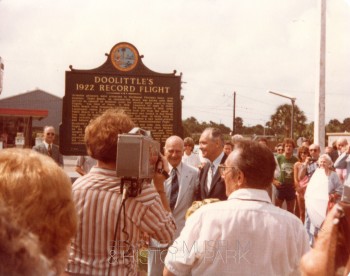 n 22 hours and 27 minutes.
n 22 hours and 27 minutes.
After making aviation history, Doolittle went on to become a Lieutenant General in the United States Air Force. On April 18, 1942, he and his crew, the Doolittle Raiders, flew 16 bombers leading the first surprise raid on Tokyo. His actions during WWII earned Doolittle military distinctions.
Years later, the Beaches Area Historical Society sought to commemorate the military hero for his role in the history of Jacksonville Beach. On September 4, 1980, the Society invited Lt. Gen. Doolittle back to Jacksonville Beach to unveil and dedicate a marker honoring his historic flight in 1922. The marker continues to stand tall in the Museum’s history park.
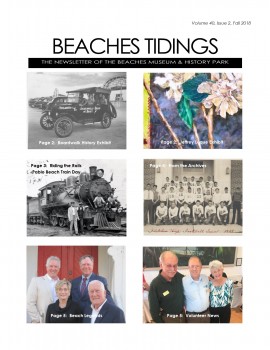 The Fall 2018 issue of Beaches Tidings, The Newsletter of the Beaches Museum & History Park, is now available. Click here to read this edition of Beach Tidings.
The Fall 2018 issue of Beaches Tidings, The Newsletter of the Beaches Museum & History Park, is now available. Click here to read this edition of Beach Tidings.

By: Alex Morales, Summer Intern
In the late 1970s, the City of Jacksonville Beach moved forward with plans to further urbanize the area. With urbanization efforts in full swing, Jacksonville Beach resident, Mrs. Jean McCormick, became concerned for the lack of historical preservation efforts and available information regarding her hometown’s past. On February 22, 1978, Mrs. McCormick and her Husband, J. T. McCormick invited a group of friends over to their house for cherry pie to celebrate President George Washington’s birthday.
She discussed the need to increase community awareness, preservation efforts to protect significant structures and landmarks and, most of all, to celebrate the rich history of the Beaches. With that, the friends formed the Beaches Area Historical Society. Their mission became “to plan a future for our past.” With that mission in mind the group set out to create a comprehensive history by designating Mayport, Atlantic Beach, Neptune Beach, Jacksonville Beach, Ponte Vedra Beach, and Palm Valley, Florida as the Beaches Area.
Gathering local support and funding became a forefront issue. The Society spread their mission through  word of mouth, letters amongst friends, running newspaper articles, as well as networking with other historical preservation groups and city council members. Likewise, the Society became heavily involved in local community activities. The April Opening of the Beaches parade signaled an early turning point for the Society. With a massive community turnout, an unexpected explosion of a nearby buggy during the parade ignited community awareness of the Society. Mr. Charles Cook Howell, Jr. wrote in a small note to Mrs. McCormick stating, “a true Champion has started the society off with a bang! This certainly argues well for the future.”
word of mouth, letters amongst friends, running newspaper articles, as well as networking with other historical preservation groups and city council members. Likewise, the Society became heavily involved in local community activities. The April Opening of the Beaches parade signaled an early turning point for the Society. With a massive community turnout, an unexpected explosion of a nearby buggy during the parade ignited community awareness of the Society. Mr. Charles Cook Howell, Jr. wrote in a small note to Mrs. McCormick stating, “a true Champion has started the society off with a bang! This certainly argues well for the future.”
In the following months, the Society saw a jump in membership and elected their first Officers and Board Members. In July, they created an official logo and drafted their first newsletter to mail members in the community. By October, the Society organized their first historical exhibits. Not having a facility or museum did  not stop them from putting one together. They utilized two small spaces in the Ocean State Bank and Beaches Guaranty Bank to display two exhibits “full of Memorabilia” that even included a 100,000 year old mammoth tooth.
not stop them from putting one together. They utilized two small spaces in the Ocean State Bank and Beaches Guaranty Bank to display two exhibits “full of Memorabilia” that even included a 100,000 year old mammoth tooth.
It was not until March 1, 1979 that the Society became a registered nonprofit organization. With an official title in hand, they arranged quarterly talks for members and invited the extended Beaches community to listen to lectures on local history. In May, Jacksonville Beach City Council approved the Society’s petition for a flat-ironed shaped property located between Beach Blvd and Pablo Ave to establish a historical park. They 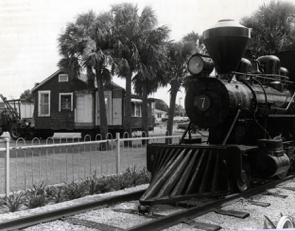 appropriately named it Pablo Historical Park after Jacksonville Beach’s previous name. The park eventually became home to five “at risk” structures, items, memorials, and markers representing and celebrating the bygone era of the Beaches Area. However, the addition of the Beaches Museum and History Center in 2006 ushered a new phase of the Society’s role in the community.
appropriately named it Pablo Historical Park after Jacksonville Beach’s previous name. The park eventually became home to five “at risk” structures, items, memorials, and markers representing and celebrating the bygone era of the Beaches Area. However, the addition of the Beaches Museum and History Center in 2006 ushered a new phase of the Society’s role in the community.
After forty years, the Beaches Area Historical Society continues to be a staple of the Beaches Area community. Despite the passing of time and a changing landscape, the spirit of the Society continues to endure with its new mission: “to preserve and share the distinct history and culture of the Beaches area.”
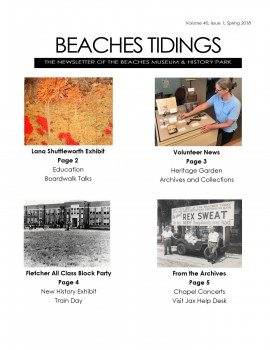 The Spring 2018 issue of Beaches Tidings, The Newsletter of the Beaches Museum & History Park, is now available. Click here to read this edition of Beach Tidings.
The Spring 2018 issue of Beaches Tidings, The Newsletter of the Beaches Museum & History Park, is now available. Click here to read this edition of Beach Tidings.
This article was written by Master Gardener Lee McDonald in honor of the 10th Anniversary of the Beaches Museum Heritage Garden.
April 1, 2018 marks the 10th Anniversary of the Heritage Garden in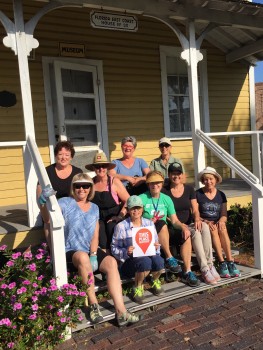 Jacksonville Beach. Located on Beach Blvd at the Beaches Museum & History Park, the garden, a Duval County Extension Demonstration Garden, is maintained by Master Gardener volunteers with the purpose of community education in gardening practices.
Jacksonville Beach. Located on Beach Blvd at the Beaches Museum & History Park, the garden, a Duval County Extension Demonstration Garden, is maintained by Master Gardener volunteers with the purpose of community education in gardening practices.
On its first anniversary, Jacksonville’s mayor designated the garden as one of the city’s top greenspace revitalization projects. Soil is critical to successful plantings because, as in much of Florida, our soils are very sandy. In by-gone days, soils here were naturally composted by horses, cows, chickens, and more roaming fauna than we see today. Fallen leaves were returned to landscapes and ash from heating and cooking were turned into the sand and soil. These historical practices made soils more suitable for gardening due to rich natural and scheduled amendments.
Composting remains essential to sustainable gardening. Thus, it is not surprising that the first order of business on April Fool’s day in 2008 was to collect composted horse manure from a local farm and plow it into the soil. These soil restoration practices from that initial day have made continued maintenance and development productive at the Heritage Garden.
 Mid-20th century, folks discovered that much chemical fertilization could boost turf and gardens around homes. The last seventy years, however, have taught us that practices, including excessive applications and misuse of certain chemicals in herbicides, fertilizers, and pesticides, damage the water table, successful human habitation, and the environment, creating a less sustainable community. As a learning center, the garden’s goal is sharing best garden practices. Volunteers show Extension recommended practices, observing how plant choices and gardening methods work to support quality of life in our specific environment.
Mid-20th century, folks discovered that much chemical fertilization could boost turf and gardens around homes. The last seventy years, however, have taught us that practices, including excessive applications and misuse of certain chemicals in herbicides, fertilizers, and pesticides, damage the water table, successful human habitation, and the environment, creating a less sustainable community. As a learning center, the garden’s goal is sharing best garden practices. Volunteers show Extension recommended practices, observing how plant choices and gardening methods work to support quality of life in our specific environment.
The 2008 Heritage Garden, envisioned to complement the turn-of-the-twentieth-century Foreman’s House, was confined to a space measuring thirty percent less than the 13′ x 18′ space is occupied within two years. Numbering fewer than ten in 2008, MG volunteers now number thirty. Over the past four years, the garden has expanded rapidly; specialized garden areas include the kitchen (vegetable and herb), rose, perennial, butterfly, shade or ginger, and bromeliad gardens as well as specialized plantings of historical native and non-native plants throughout the park. At present, the garden hosts over 240 varieties of plants with new additions every season. It is accessible with paved pathways and ramps meeting ADA standards. Visitors may wander through and observe the garden during museum hours. Tours are available by reservation. School and civic groups regularly schedule visits to tour the garden and museum exhibits.
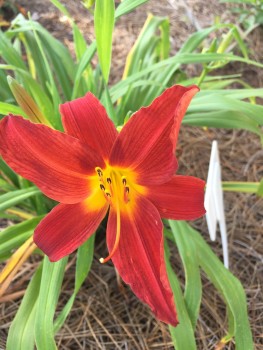 In 2012, the Heritage Garden was recognized by UF/IFAS Florida Master Gardener Program as one of Florida’s most outstanding demonstration gardens. Over the decade, we have faced typical challenges of Florida living, actively engaging in renewal and sustainable practices for both edible and ornamental plant growth. The garden has weathered development and redevelopment with the addition of two newly moved and restored historic buildings which altered the footprint of the garden as well as storms and hurricanes which served as reminders of the history of our community. The French first recorded a hurricane here in 1564; but human habitation here at the mouth of the St. John’s spans thousands of years. The Beaches Museum and Heritage Gardens presents the simple, amazing history of the region we call home. The Heritage Garden is a demonstration of practices which will yield a successful home garden on our island today.
In 2012, the Heritage Garden was recognized by UF/IFAS Florida Master Gardener Program as one of Florida’s most outstanding demonstration gardens. Over the decade, we have faced typical challenges of Florida living, actively engaging in renewal and sustainable practices for both edible and ornamental plant growth. The garden has weathered development and redevelopment with the addition of two newly moved and restored historic buildings which altered the footprint of the garden as well as storms and hurricanes which served as reminders of the history of our community. The French first recorded a hurricane here in 1564; but human habitation here at the mouth of the St. John’s spans thousands of years. The Beaches Museum and Heritage Gardens presents the simple, amazing history of the region we call home. The Heritage Garden is a demonstration of practices which will yield a successful home garden on our island today.
This article was written for the February and March 2018 Spotlight Exhibit on Orpah Jackson created by Spring 2018 Beaches Museum interns, Dylan Franke and Nick Iorio.
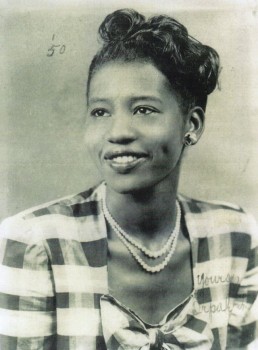 Orpah Jackson was, and continues to be, an important member of the Beaches community; working as a teacher for 55 years and actively participating in community projects. Born on June 15th, 1920 in Lumpkin, Georgia, her family later moved to a small neighborhood in East Mayport, Florida when she was 6 years old. This move was influenced by her mother’s desire to provide a better education for Orpah and her brother.
Orpah Jackson was, and continues to be, an important member of the Beaches community; working as a teacher for 55 years and actively participating in community projects. Born on June 15th, 1920 in Lumpkin, Georgia, her family later moved to a small neighborhood in East Mayport, Florida when she was 6 years old. This move was influenced by her mother’s desire to provide a better education for Orpah and her brother.
Attending school as an African American was difficult. After sixth grade, Orpah had to find methods of travelling into Jacksonville to attend Junior High School. In 1940, Orpah graduated from Stanton High School and five years later from Cornell University. She then moved to Melbourne, Florida where she began her first teaching job.
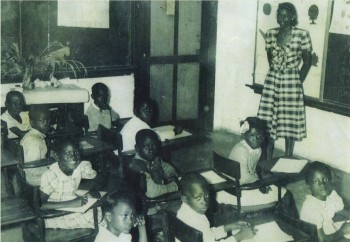 In 1946 she moved back to Duval County and began a job as teacher and principal of 19 African American students in Mayport Village. When that school was closed in 1948, she began teaching 2nd grade at School #144 in Jacksonville Beach. Here, Orpah taught a wide range of subjects to her 2nd graders including reading, math, music, and physical education for 20 years.
In 1946 she moved back to Duval County and began a job as teacher and principal of 19 African American students in Mayport Village. When that school was closed in 1948, she began teaching 2nd grade at School #144 in Jacksonville Beach. Here, Orpah taught a wide range of subjects to her 2nd graders including reading, math, music, and physical education for 20 years.
Upon integration, Orpah transferred to Seabreeze Elementary, where she taught for 10 years. Including her years working as a substitute teacher at Neptune Beach Elementary and Atlantic Beach Elementary, Orpah taught until 2000.
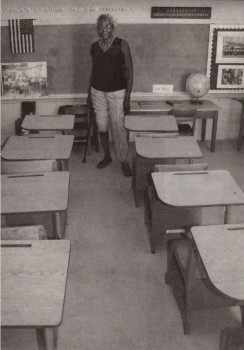 Orpah was involved with many projects including the coordination of the integrated Vacation Bible School for the local churches, working with Meals on Wheels as a member of Church Women United, providing assistance to the neighborhood through the Donner Community Development Corporation, and serving as the first African American woman in Atlantic Beach to work on the voting Precinct. She currently serves as a member and Treasurer on the Board of the Rhoda L. Martin Cultural Heritage Center, which works to preserve the history of School #144 where her old classroom is on display.
Orpah was involved with many projects including the coordination of the integrated Vacation Bible School for the local churches, working with Meals on Wheels as a member of Church Women United, providing assistance to the neighborhood through the Donner Community Development Corporation, and serving as the first African American woman in Atlantic Beach to work on the voting Precinct. She currently serves as a member and Treasurer on the Board of the Rhoda L. Martin Cultural Heritage Center, which works to preserve the history of School #144 where her old classroom is on display.
A special exhibit spotlighting Orpah and her many accomplishments can be found in the lobby of the Beaches Museum through March, 2018.
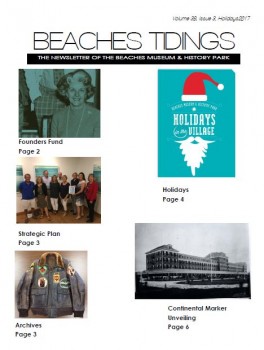
The Holidays 2017 issue of Beaches Tidings, The Newsletter of the Beaches Museum & History Park, is now available. Click here to read this edition of Beach Tidings.
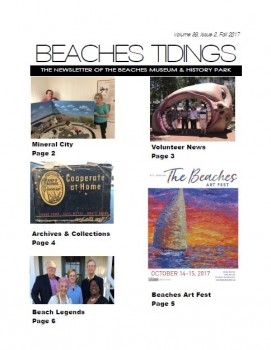
The Fall 2017 issue of Beaches Tidings, The Newsletter of the Beaches Museum & History Park, is now available. Click here to read this edition of Beach Tidings.
Shrimping and Fishing in Mayport
This article is an excerpt from the 2016 exhibit, Mayport Village: On the River of Change.
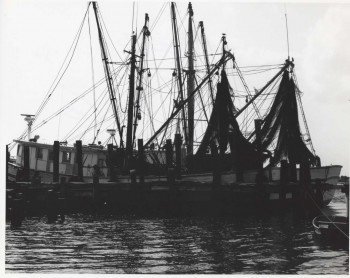
Commercial fishing and shrimping operations have played an integral role in shaping life in Mayport Village for over one hundred and fifty years. Home to some of the oldest shad fisheries in Florida, the industry has experienced several transformations as technology and infrastructure has evolved.
In the 1850s, New England fishermen discovered the mouth of the St. Johns River was teeming with shad, mullet, alewives, and other marine species that relied on fresh water for feeding and spawning. By the 1870s, several Connecticut-based boat captains, including Captain David Kemps, Sr. relocated to the Mayport Village area to make a living. Deploying shad-nets, mullet-nets, haul-seines and gill-nets, they fished alongside expert African-American fishermen who were chiefly responsible for the fisheries’ daily operations. More than three-fourths of the catch was sold to dealers in Savannah.
By the early 1900s, mullet and shad populations dropped dramatically. Mayport captains attributed this to the unrestricted use of gill-nets and the increasing presence of steamboats in the river.
New opportunities arose in shrimping, however, by the 1920s. The advent of motorized fishing vessels made offshore shrimping a feasible and lucrative venture. The arrival of experienced Portuguese fishing families, the Rowlands and the Perrys, that same decade breathed life into a nascent industry.
By the 1950s, shrimp docks dominated the horizon of Mayport. Local men like Johnny Vona, Booty Singleton, Mathias “Matt ” Roland, Mr. Parnell, Manuel Jesus, Jesse Perry, and A.J. Ruffin were the backbone of the industry. Two decades later, more than 150 shrimping vessels were unloading their catch at Mayport Village docks. Nearly everyone in the village had a shrimper in their family. A popular local pastime was to greet the boats as they entered the village to see the day’s catch.
The late 1990s and early 2000s, however were unkind to the once-bustling shrimping fleet. Local shrimpers credit rising gas-prices and foreign imports of Ecuadorian and Asian shrimp for the industry’s decline. Today, Safe Harbor Seafood is the last remaining dock open for commercial offload.